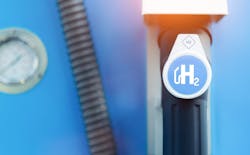American, Japanese Energy firms partnering on building 30 H2 Fueling sites in California
Chevron U.S.A., a subsidiary of Chevron, one of the world’s leading integrated energy companies, has signed an agreement with Iwatani Corporation of America to co-develop 30 hydrogen fueling sites in California by 2026.
The sites will be located at Chevron-branded retail locations across the state. Iwatani will operate and maintain the sites and supply hydrogen and transportation logistics services. Initially, these sites will fuel light-duty vehicles but ensure flexibility to service even heavy-duty vehicles in the long term. Chevron intends to supply part of these sites with excess hydrogen production capacity at its Richmond Refinery and future production from pilot projects situated in Northern California.
“This extensive collaboration between Iwatani and Chevron demonstrates our shared vision and commitment to support the decarbonization of transportation,” said Joseph S. Cappello, chairman and CEO of Iwatani Corporation of America. “Together, Chevron and Iwatani will establish one of the most robust, vertically integrated supply and infrastructure ecosystems in California and is a model that can be replicated to other markets.”
“Chevron believes that hydrogen has the potential to assist in lowering the carbon emissions of the transportation sector and other hard-to-decarbonize industries,” said Andy Walz, president of Americas Fuels & Lubricants for Chevron.
Related stories
Chevron, Caterpillar & BNSF Railroad collaborate on Hydrogen for Rail Transport
Green Hydrogen production begins at Shell facility in China
See our full coverage on Hydrogen's role in the C&I Transition
Hydrogen does not emit carbon when burned. However, it is only created for commercial scale through steam refactoring of methane gas or by electroysis splitting the hydrogen from water.
Chevron is planning to ramp up hydrogen production intake to 150,000 metric tons per year for industrial, power and heavy duty transport by 2030. It previously has announced H2-focused deals with Toyota, Caterpillar and Cummins.
The market push for a utility-scale, baseload clean energy and vehicle power resource is driving momentum for hydrogen. Allied Market Research previously forecast that the hydrogen fuel cell vehicle market could grow 67 percent annually to $42 billion value in the U.S. by 2026.
About the Author
EnergyTech Staff
Rod Walton is senior editor for EnergyTech.com. He has spent 17 years covering the energy industry as a newspaper and trade journalist.
Walton formerly was energy writer and business editor at the Tulsa World. Later, he spent six years covering the electricity power sector for Pennwell and Clarion Events. He joined Endeavor and EnergyTech in November 2021.
He can be reached at [email protected].
EnergyTech is focused on the mission critical and large-scale energy users and their sustainability and resiliency goals. These include the commercial and industrial sectors, as well as the military, universities, data centers and microgrids.
Many large-scale energy users such as Fortune 500 companies, and mission-critical users such as military bases, universities, healthcare facilities, public safety and data centers, shifting their energy priorities to reach net-zero carbon goals within the coming decades. These include plans for renewable energy power purchase agreements, but also on-site resiliency projects such as microgrids, combined heat and power, rooftop solar, energy storage, digitalization and building efficiency upgrades.
